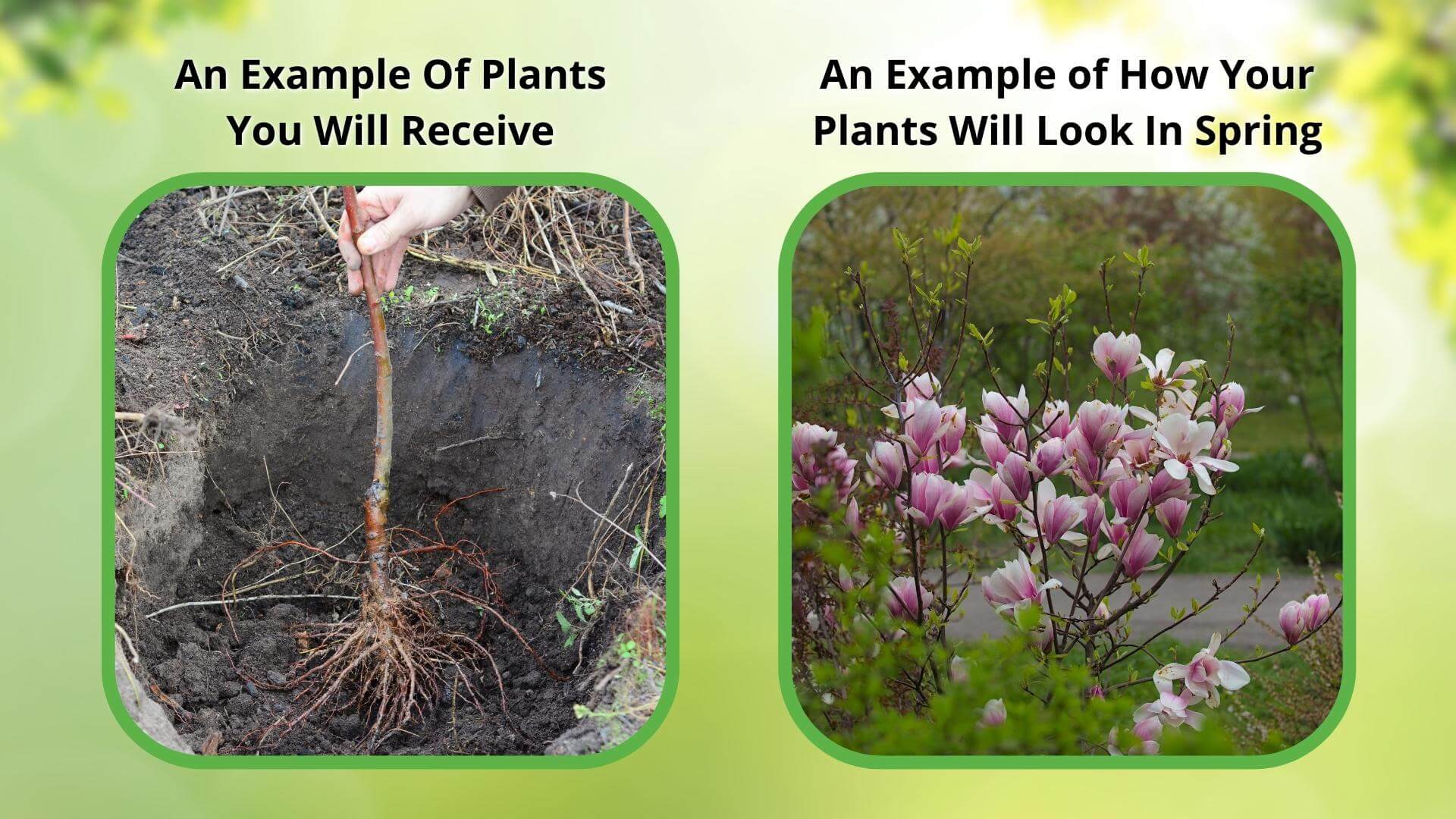Couldn't load pickup availability
🌸When you add 1 plant to cart, it automatically adds the free one
Natchez Crepe Myrtle For Sale
The Natchez Crepe Myrtleis a highly ornamental deciduous tree that will brighten your landscape with its clouds of white flowers. It is a lovely deciduous tree with gorgeous, elegant white blooms and exfoliating bark. It is truly captivating and will turn heads!Use this tree as an accent or focal point in your yard or plant to create a stunning allée. As this tree is very fast-growing, you can use a few of these trees to create a living privacy screen or hedge. This will add great curb appeal to your home or landscape.
Plant Details - California Privet Hedge (Ligustrum Ovalifolium)
Family: Lythraceae
Light Requirement: Full Sun
Water Needs: Moist
Height: 15 - 20 ft.
Spread: 10 -15 ft.
Growth Rate: Fast
Bloom Time: Summer
Flower Color: Pink
Wildlife Value: Attracts bees, butterflies, birds
Landscape Uses and Maintenance - California Privet Hedge (Ligustrum Ovalifolium)
This tree has dark green leaves that chang into a stunning display of orange and red during the fall season. Its bark is exfoliating in nature, with beautiful creamy and brown coloring – providing great interest in the garden for all four seasons.
It's a great shrub to attract pollinators like birds and bees, and will come in great use when everything else for the season has stopped blooming. It has a super long bloom cycle in late July and stays blooming for up to 6 weeks at the end of summer.
Noteworthy Characteristics of California Privet Hedge
The Natchez White Crepe Myrtle is disease and pest resistant and requires on special care, maintenance or harmful chemicals to thrive in your landscaping.
This Is How Your Plants Will Look upon Delivery

Bloom Season
Summer
Bloom/Foliage Color
White
Height at Maturity
Under 25 Feet
Care
Natchez Crepe Myrtle thrives in well-drained soil and requires regular watering, especially during dry periods. Prune annually in late winter to maintain shape and remove dead or crossing branches. Fertilize in early spring to encourage robust blooms.
Plant Reproduction
Natchez Crepe Myrtle spreads via seeds, root suckers, and cuttings.
How to Grow and Care for Bare Root Trees
Bare root trees are shipped dormant without soil, making them lightweight, cost-effective, and easy to plant during the cool months of early spring or fall. To begin, soak the roots in a bucket of water for 4–6 hours before planting to rehydrate them. Choose a sunny location with well-draining soil and ample space for the tree’s mature size.
Dig a hole twice as wide as the spread of the roots and deep enough to keep the root flare (where the roots begin to spread from the trunk) at or slightly above ground level. Create a small mound of soil in the center of the hole, spread the roots evenly over it, backfill with native soil, and gently tamp down to remove air pockets. Water thoroughly after planting.
Keep the soil consistently moist (not soggy) during the first growing season, and apply mulch around the base—avoiding direct contact with the trunk—to conserve moisture and suppress weeds. Stake the tree if necessary, and prune only to remove dead or damaged branches. With proper care, your bare root tree will establish quickly and grow strong for years to come.
Shipping date depends on the date displayed and chosen when you order from the product's page.
We only accept returns on plants verified dead. If you think your plants have died, we offer a 1 year warranty, please use use this File a Claim Link to verify dead plants and start with return warranty process.



Caring Tips
How do I care for my Natchez Crepe Myrtle?
Each box contains detailed care instructions and information about your product. But here's the basics.
Care Tips
Natchez Crepe Myrtle thrives in well-drained soil and requires regular watering, especially during dry periods. Prune annually in late winter to maintain shape and remove dead or crossing branches. Fertilize in early spring to encourage robust blooms.
Light Requirements
The Natchez Crepe Myrtle thrives in complete sun, needing at least six hours of natural daylight. This exposure promotes its vibrant blooms and healthy growth, making it an excellent choice for sunny garden spots.
Hardy Planting Zones
6 • 7 • 8 • 9
I ordered a pair of these. Received the order within a couple of days. The plants are dominant at this point but looked great. Nice amount of roots and plenty of upward branches to work with. Can't wait for spring.
Ordered 4 and had 5 come to life...thank you.
Know it will be a few years but am anticipating the bark on the tree in the late fall.
Love this species of Crepe myrtle.
Got two for price of one . What a deal.
My trees arrived on time and we planted them the day after. Looking forward to seeing the grow.
Everything was just as expected. I even received an extra one or two.




